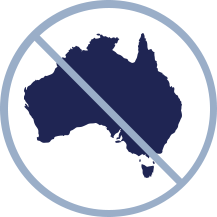This Federal Budget has been shadowed by the economic uncertainty and unusual difficulties faced under the coronavirus. This means there has been a general expectation that there would be significant announcements made in the effort to stem the negative impact that COVID-19 restrictions have had on the economy.
With the income tax changes covered in the Treasury Laws Amendment (A Tax Plan for the COVID-19 Economic Recovery) Bill 2020 passing both houses of Parliament on 9 October 2020, both employers and employees could be seeing the benefit of budget announcement in a matter of weeks.
Here’s an overview of the key Government announcements.
Personal Income Tax
The planned reduction in personal income tax rates is being brought forward to 1 July 2020. That means you’ll be seeing the benefits not just in your 2021 tax return, but in adjustments to your salary package as soon as the PAYGW rates are updated.
While the tax free threshold and the top marginal tax tier remain unchanged, the 19%, 32.5%, and 37% tax tiers now cover higher levels of income.
| * | Previous Tax Rate for 2021 | New Tax Rate for 2021 |
| NIL Tax | 0-$18,200 | 0-$18,200 |
| 19% Tax | $18,201-$37,000 | $18,201-$45,000 |
| 32.5% Tax | $37,001-$90,000 | $45,0001-$120,000 |
| 37% Tax | $90,001-$180,000 | $120,001-$180,000 |
| 45% Tax | $180,001 + | $180,001+ |
*Medicare levy of 2% also applies unless exempt.
Low Income Tax Offset (LITO) and Low and Medium Income Tax Offset (LMITO)
The LMITO offset of a maximum of $1,080 for taxpayers will continue to apply in the 2021 income tax year. Individuals with a taxable income of between $48,000 and $90,000 will be able to access this offset in full.
The maximum low Income Tax Offset is increased to $700 for individuals earning under $37,500. A pro-rata amount of the low income tax offset will be available to individuals who earn under $66,667. (The LMITO is also available to low income tax earners in addition to the LITO).
Instant Asset Write-Offs
Unlike previous allowances for instant asset write-offs, this allowance is uncapped. That means eligible businesses can claim the full cost of new assets purchased, regardless of how much those purchases were.
From 7:30pm 6 October 2020 until 30 June 2022 the instant asset write off provisions have also been extended to businesses with a turnover of up to $5 billion.
This will essentially mean that 99% of businesses will be able to fully write off the cost of purchasing and installing assets that are acquired and first used between 7 October 2020 and 30 June 2022.
Small businesses (under $10 million turnover) with a balance in a simplified depreciation pool, will be able to expense the full remaining balance of that pool in the 2021 and 2022 years.
Loss Carry-Back
For businesses with a turnover of up to $5 billion who have made a tax loss this year, but paid taxes in previous years, the government is creating an opportunity to go back and offset current losses against previous profits. This will allow those businesses to generate a refund from those previously paid taxes.
The limitations imposed on this measure include:
- Limiting the amount carried back to be no more than the earlier taxed profits.
- The requirement that the carry-back does not cause a company to have a franking account deficit.
The tax refund generated by carry-back losses will be available to eligible businesses on lodgement of their 2021 and 2022 tax returns. As this measure is optional, businesses can choose to simply carry forward their current year tax losses as normal.
Small Business Tax Concessions Extended to Larger Businesses
The small business tax concessions have been extended to businesses who have an aggregate annual turnover of between $10 million and $50 million.
Access to small business tax concessions include:
- From 1 July 2020, eligibility to immediately deduct certain start-up and prepaid expenses.
- From 1 April 2021, exemption from the 47% FBT on car parking and multiple work-related portable electronic devices (phones, laptops) being provided to employees.
- From 1 July 2021, access to simplified trading stock, PAYGI remittance based on GDP adjusted notional tax, and monthly settlement of excise duty.
- A two year amendment period for assessments from 1 July 2021.
- Potential for a simplified accounting method for GST purposes.
JobMaker Incentive
The JobMaker incentive is a government grant paid to employees who hire young job seekers.
The payments are made at $200 a week for eligible employees between 16 and 29 years old, or $100 a week for eligible employees between 30 and 35 years.
The limits and eligibility criteria include:
- The job must be a newly created job between 7 October 2020 and 6 October 2021. It must not displace an existing employee.
- The credit is claimed quarterly in arrears and is capped at $10,400 for each new position created.
- The credit claimed cannot exceed the payroll increase for the reporting period.
- Eligible employees must be paid for a minimum of 20 hours per week on average over the reporting period
- The new employee must have been on JobSeeker, Youth Allowance, or Parenting Payments for at least one out of the past 3 months before being hired.
- The new employee cannot be an existing or former employee of the business and the employer cannot also be receiving a wage subsidy under another program for the employee.
- Employers claiming JobKeeper payments are not eligible.
- New employers created after 30 September 2020 will not be able to claim for the first employee they hire.
R&D Incentives
Small companies with turnovers below $20 million will have access to an 18.5% R&D tax offset.
Corporate Residency Test
Where a company was incorporated offshore it now has a chance to be considered an Australian tax resident. To become an Australian tax resident the company must have “significant economic connection to Australia”. This effectively means that the company must undertake their core commercial activities in Australia and have its central management and control in Australia.
Keeping up with technology
While not strictly a tax measure, the Government has also indicated that they will be looking into making permanent changes to the Corporations Act 2001 in order to keep up with the times. This would mean companies could achieve a quorum through virtual attendance at meetings and provide certainty on issues such as electronically executing documents.
FBT Changes
A new FBT exemption will be introduced for employers to retrain and reskill employees who are being made redundant. This is so that the employer can help reskill an employee for a brand new position without triggering an FBT liability in covering costs that don’t have a sufficient connection to their existing role. This does not cover the cost of Commonwealth supported university placements or repayments of Commonwealth student loans.
The Government is also looking at measures to reduce the compliance burden on FBT returns being finalised from 1 April 2021.
CGT on “Granny Flats”
Where an elderly or disabled person transfers their home, or the proceeds from the sale of their home to an adult child or trusted person, so that the trusted person can provide ongoing housing and care for them, then a CGT exemption will be applied to the arrangement.
Commercial rental arrangements are not covered by this exemption. It only applies where the arrangement is entered into on the basis of family relationships or other close personal ties.
Taxing Times
With many concessions, rate changes, incentives, and ease of administrative burden efforts under way, taxpayers could be seeing a large overhaul that may leave a permanent mark on the tax system.
Please keep in mind that the announcements are subject to change as the Government finalises legislation.



